
P-38J

The Lockheed P-38 is one of the most famous US fighters of WWII and as such there is much in print and online about it and I'm not going to repeat it all here. This kit will be built as a J model and the differences between it and the earlier models are covered in the following. The P-38J was introduced in August 1943. The turbo-supercharger intercooler system on previous variants had been housed in the leading edges of the wings and had proven vulnerable to combat damage and could burst if the wrong series of controls were mistakenly activated. In the P-38J model, the streamlined engine nacelles of previous Lightnings were changed to fit the intercooler radiator between the oil coolers, forming a "chin" that visually distinguished the J model from its predecessors. While the P-38J used the same V-1710-89/91 engines as the H model, the new core-type intercooler more efficiently lowered intake manifold temperatures and permitted a substantial increase in rated power. The leading edge of the outer wing was fitted with 55 gal fuel tanks, filling the space formerly occupied by intercooler tunnels, but these were omitted on early P-38J blocks due to limited availability.
The final 210 J models, designated P-38J-25-LO, alleviated the compressibility problem through the addition of a set of electrically actuated dive recovery flaps just outboard of the engines on the bottom centerline of the wings. With these improvements, a USAAF pilot reported a dive speed of almost 600 mph, although the indicated air speed was later corrected for compressibility error, and the actual dive speed was lower.
The
P-38J-25-LO production block also introduced hydraulically boosted
ailerons, one of the first times such a system was fitted to a fighter.
This significantly improved the Lightning's rate of roll and reduced
control forces for the pilot. This production block and the following
P-38L model are considered the definitive Lightnings, and Lockheed
ramped up production, working with subcontractors across the country to
produce hundreds of Lightnings each month.
The Kit
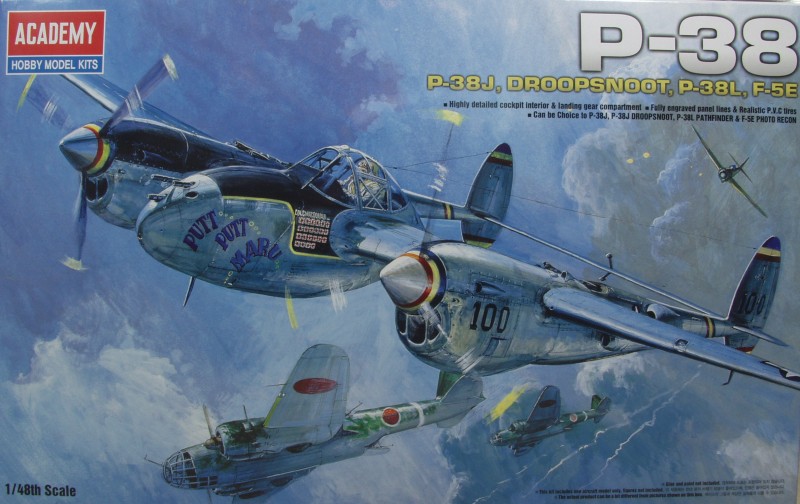
The Academy kit comes in a fairly large box for a 1/48 scale kit. It's a top open tray type box with a thin card stock top and a bottom half made from thin corrugated cardboard . Inside the box which is pretty well full of sprue trees one finds six sealed bags of which all but two contain two or more sprues of parts. The parts are molded in a light greenish gray very similar in color to RLM 02 green. The parts are crisply molded with only a hint of flash here and there. Mold alignment looks good with only an average amount of mold misalignment and mold seams to deal with. The parts surface is smooth and detail consists of recessed panel lines and some raised rivet and fastener detail. Panel lines are pretty much average for the scale and are consistent. The control surfaces are all molded in the neutral position. The only ejector pin marks I found that would show were on the main gear and nose gear struts. Looking over the airframe parts the only surface defects I found were a couple of places where there might have been some dust or dirt on the dies and these were raised and should be easily sanded away.
From a detail standpoint starting inside, the cockpit is OK in that it has most of the major parts there but the detail level is a little light. Probably enough detail to satisfy most. The gear bays are boxed in and include some of the coolant system piping and considering how little of them can be seen are good enough in my book. The main gear doors have some nice detail on them and they will be more visible than any thing else. Two complete sets of wheels are supplied. One set has smooth treaded tires and wheel covers, the other has treaded tires and no wheel covers. Both sets are in halves and are not weighted. The kit comes with four different noses, three molded in kit color and one in clear. One each for the J, J droopsnoot, L pathfinder and F-5E Photo recon. The J droopsnoot is in clear which eliminates the need to have separate clear parts for the nose. The instructions say 20 grams of weight is needed to keep the nose down but I am never totally trusting so doing so balance testing before closing things up is a good idea. A good assortment of armament is supplied, two racks with five HVAR's, two 500 pound bombs, two three tube bazooka style rocket launchers and two drop tanks. A load out chart for the different versions is provided. The propellers have separate blades which are keyed for pitch, one must remember they rotate in opposite directions when it comes to mounting them. OK, lets look at the parts.
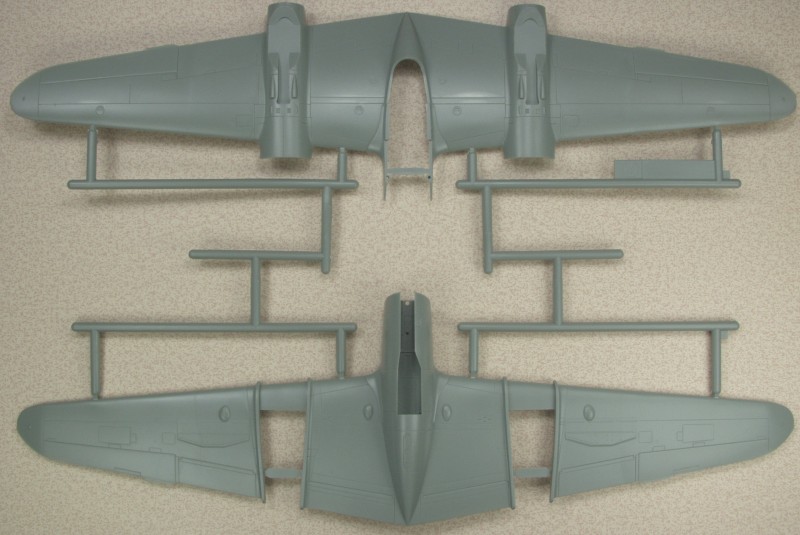
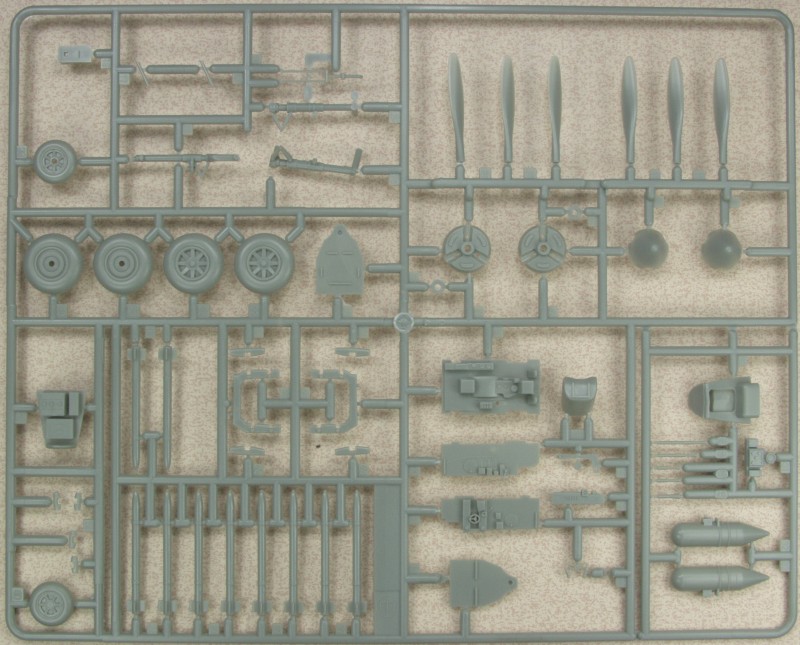
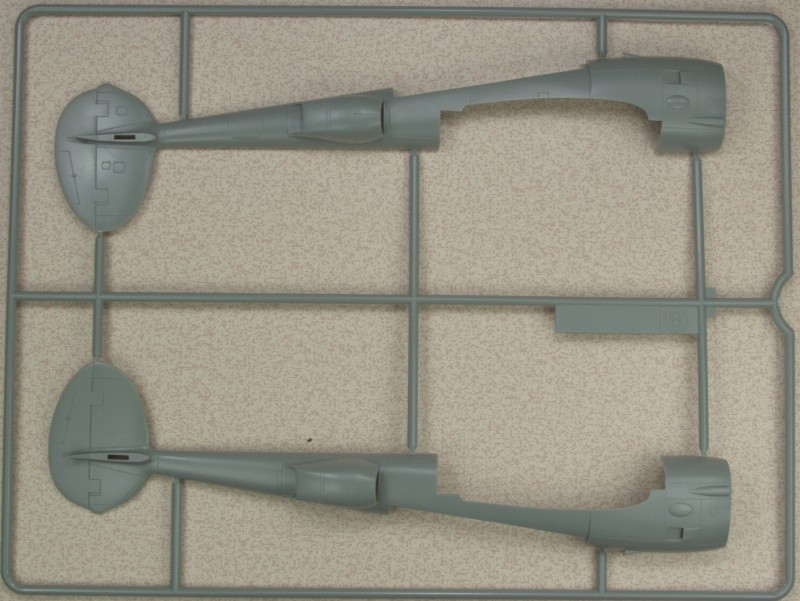
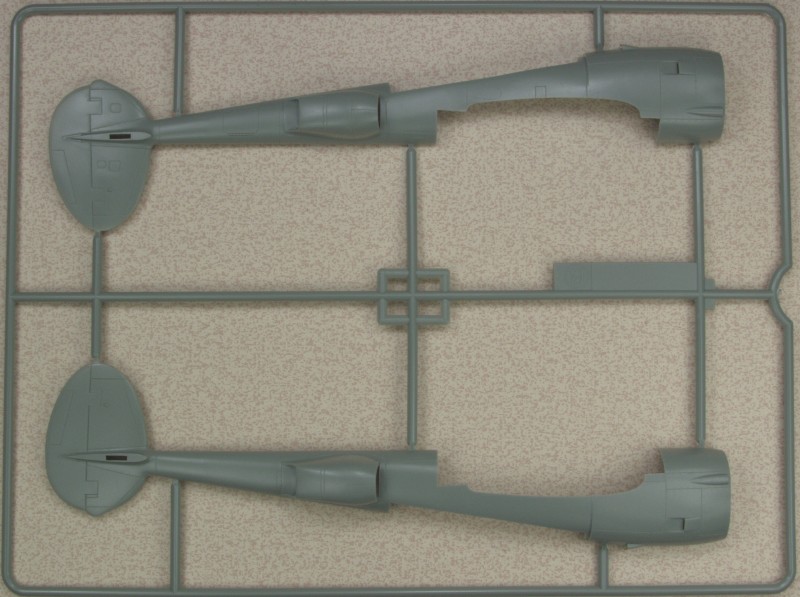
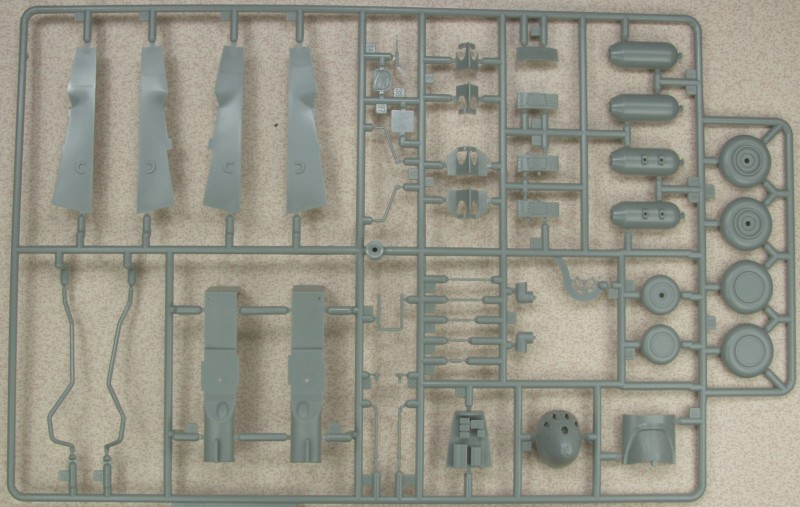
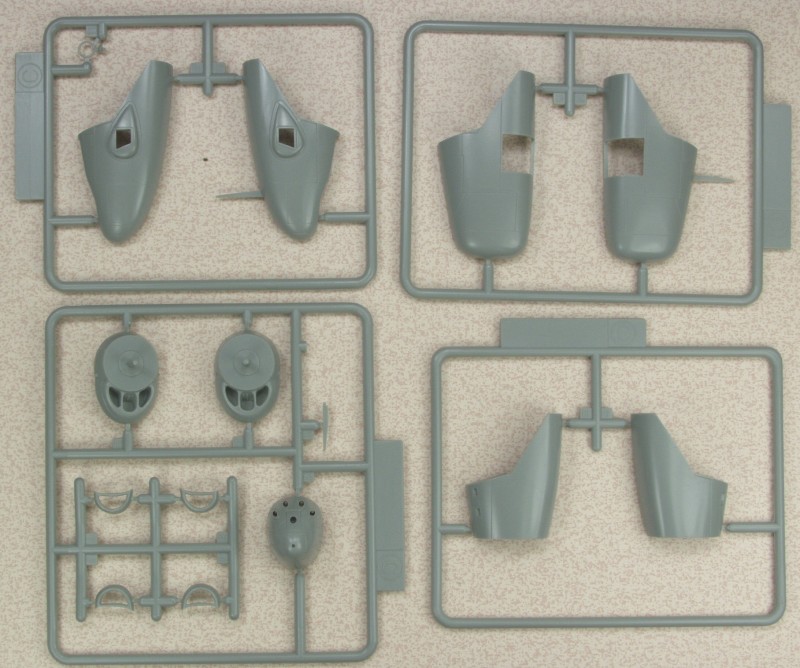
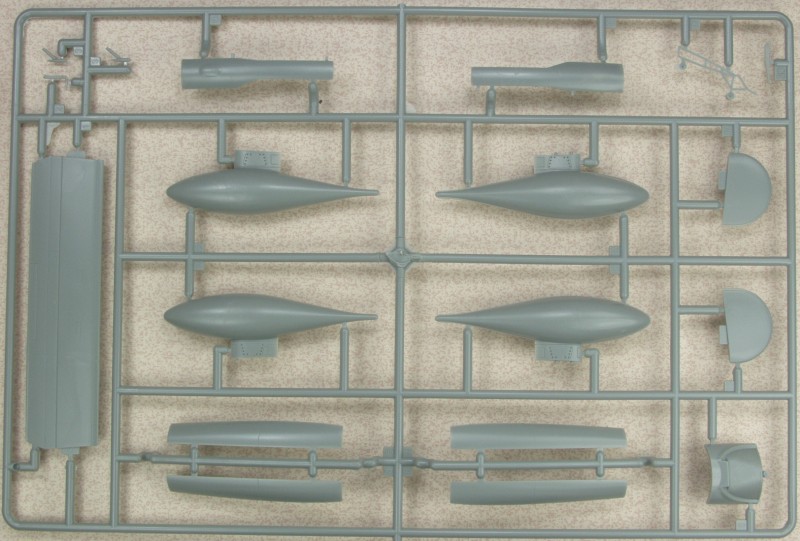

There are 21 parts that are keyed as not used.
The clear parts are of medium thickness and exhibit some optical distortion but should look OK after a dunk in Future. The center area is made up of three separate pieces.
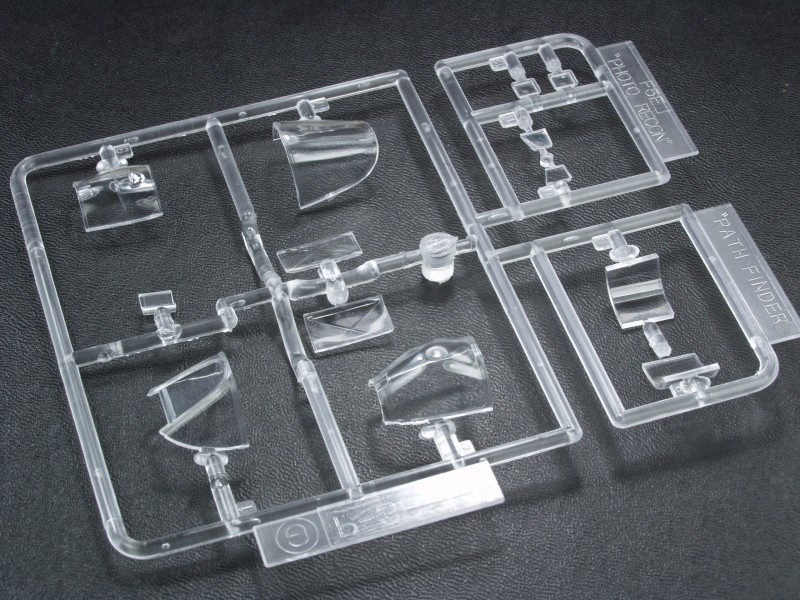
The second sprue contains the droopsnoot nose parts.
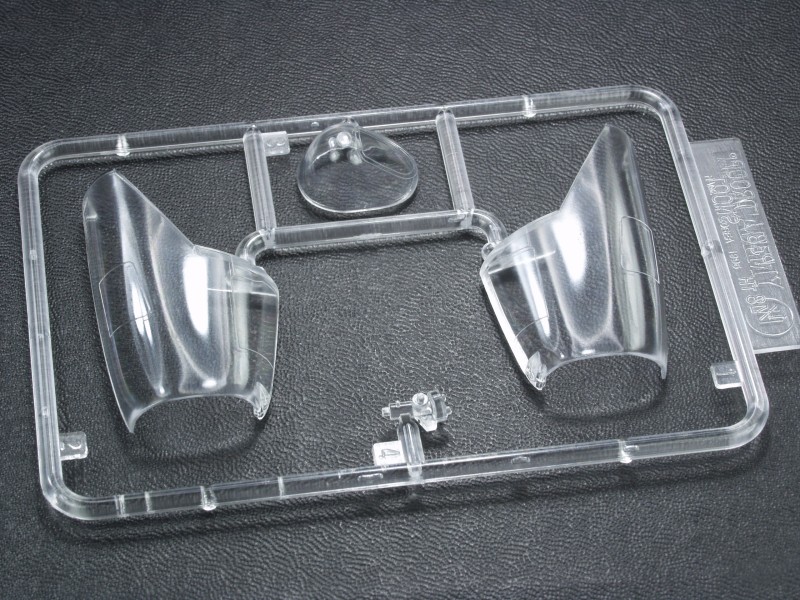
The decals have a glossy finish, are in register and have good color density. The sheet provides markings for five aircraft, one for each version supplied in the kit; P-38J, flown by Col. Charles H. MacDonald, CO 475 FG (Putt putt Maru), P-38J Droopsnoot, (no info supplied), P-38 L Pathfinder (no info supplied), F-5E Photo recon, (no info supplied).
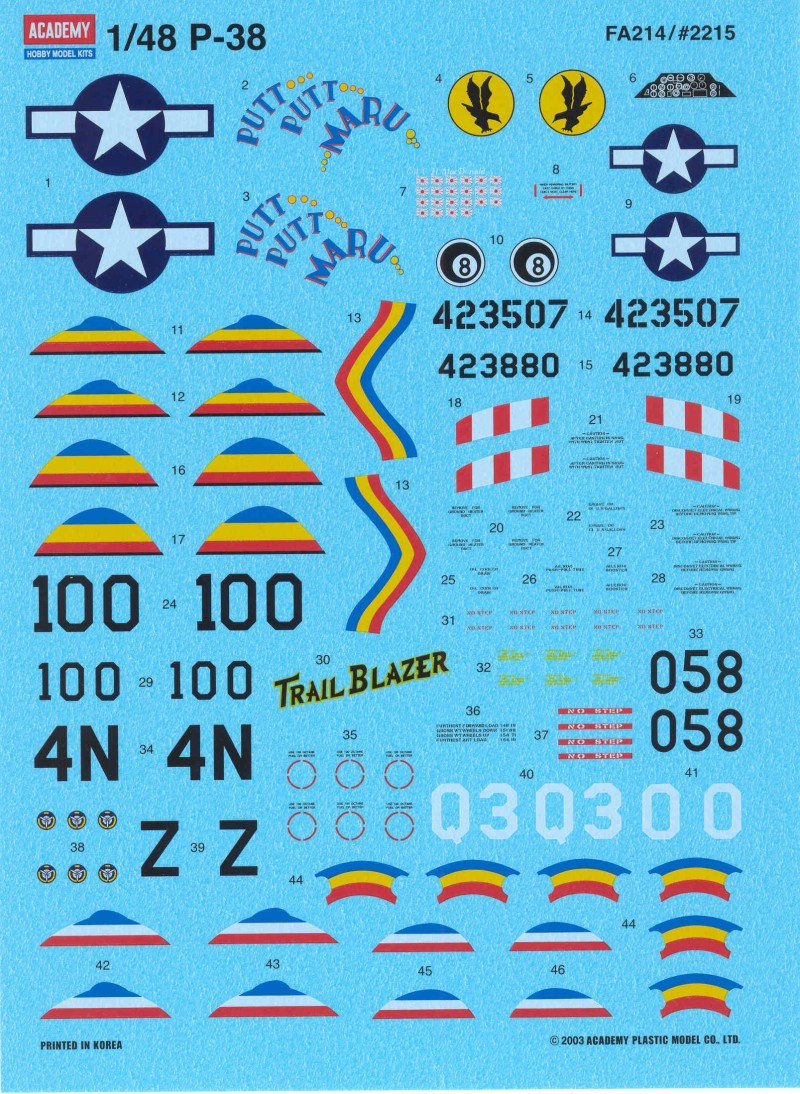
The instructions are a long map style sheet folded to form 8 panels. One panel has an icon chart and the usual safety warnings and general instructions. Five panels contain the assembly diagrams divided into 9 steps. One panel has the painting and marking diagrams for the P-38J and one panel has a parts map. A separate sheet has the painting and marking diagrams for the other four aircraft.
After Market Goodies
Because the kit cockpit is a bit lack luster I decided to go with the Eduard Brassin cockpit (648259. The set includes a complete cockpit and side walls. The parts are all extremely well cast and I found no air bubbles or short shot parts.
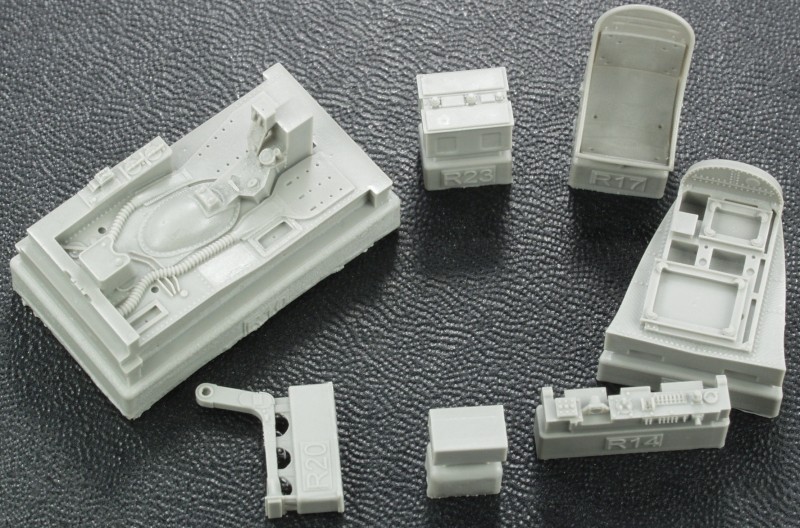
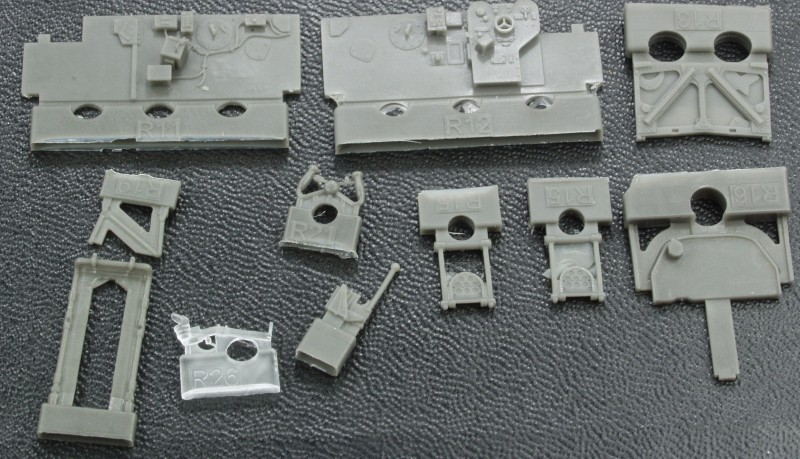
The set also includes a small fret of color photo etch for the IP, seat belts and other details.
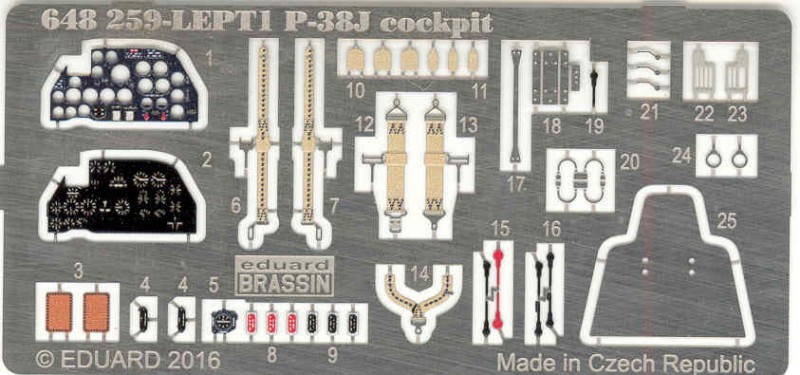
Although the kit wheels are OK I liked the look of the Eduard Brasin wheel set (648258). The set has nice tread detail and includes the manufacturers name on the tires. Again these were crisply cast with no visible defects. The photo etch provides the wheel covers if desired and the set includes masks for painting.
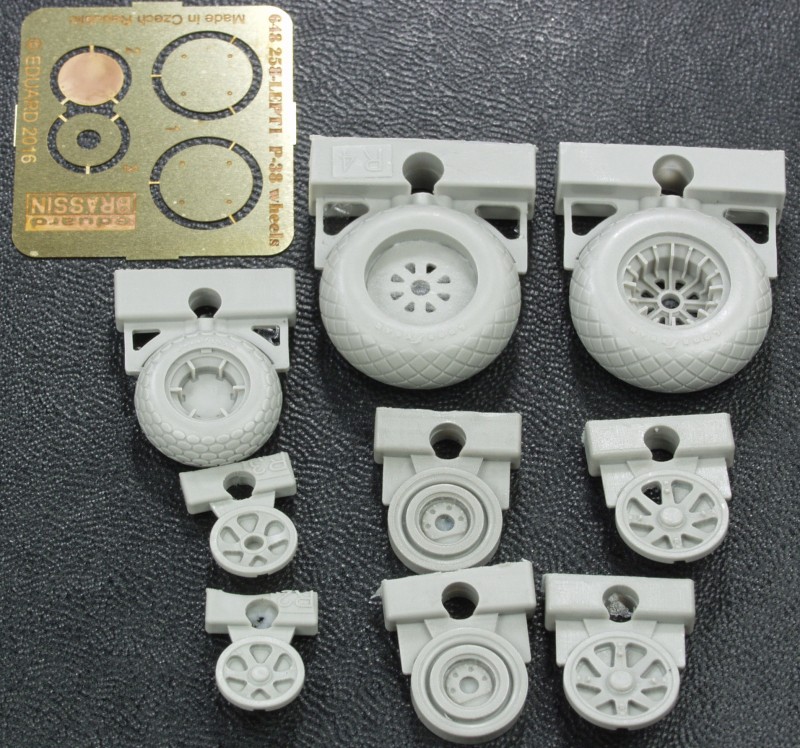
And finally the Eduard Brassin turbo chargers and air intakes (648283). These have an enhanced level of detail compared to the kit parts.
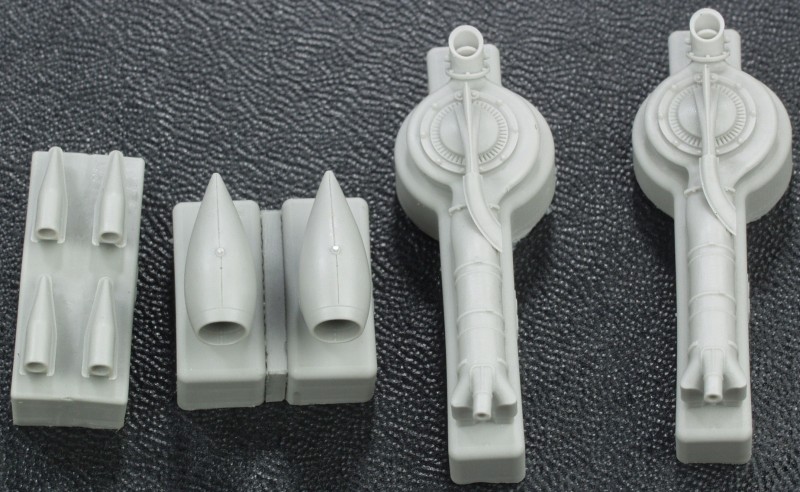
The photo etch provides some added detail in the area surrounding the turbochargers.
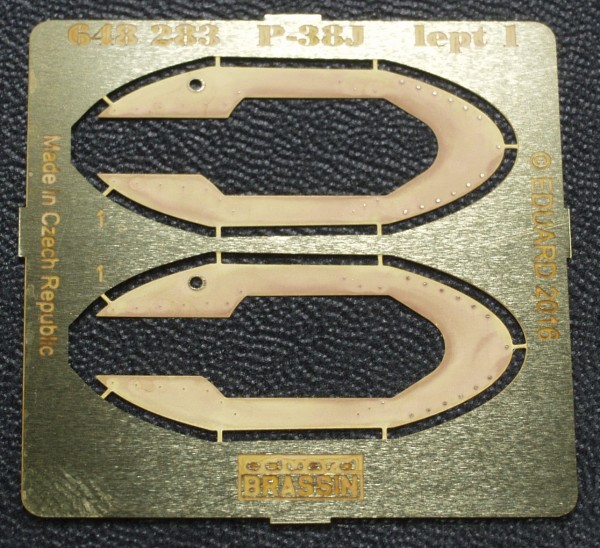
And finally some after market decals, I decided I wanted to do something different and chose a set which included markings for Robin Olds aircraft. The Kits World sheet actually has markings for four different aircraft that he flew while with the 434th FS, 479th FG. Three are OD over neutral gray, one with invasion stripes and one in natural aluminum. The fifth aircraft that can be done with this set is a NMF aircraft flown by Lt, McLawson with the 36th FS, 8th FG. The sheet is actually rather small as it depends on the kit sheet for the national markings. The decals appear thin and sufficently opaque with minimal clear surrounds. Registration really isn't an issue. The sheet contains some small stencils that really aren't addressed in the rather smallish sheet of instructions so some reference photos would be really helpful. I have not used any Kits World decals so I can't comment on how well they will work.
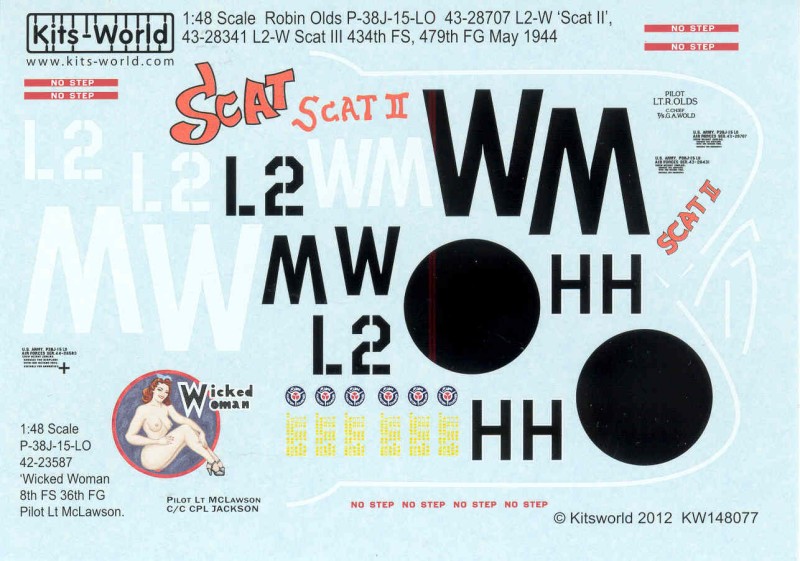
And a scan of the profiles
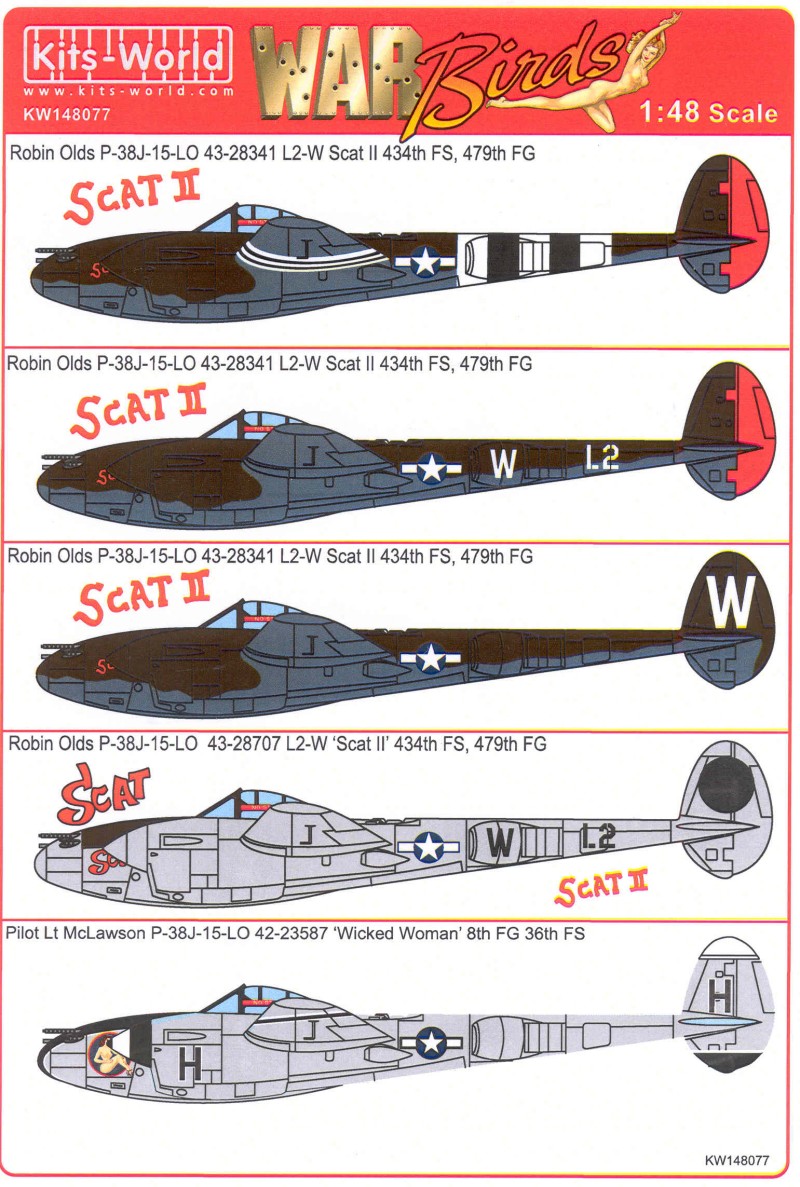
Conclusions
The Acadamy kit is considered one of the best of the available P-38s in this scale. Virtually all of the available kits have some assembly issues and care must be used when assembling to make certain every thing is aligned and square. While the kit gets pretty good marks for fit, I would still not recommend the kit to beginners.
Links to kit build or reviews
Not a lot to be found but here is a build / review of the F-5E which is basically the same kit.
References
Famous Fighters of the Second World War by William Green
P-38 Lightning in Action by Gene B. Stafford
P-38 Lightning Part 2 in Detail & Scale by Bert Kinzey
Back to
the Misc 1/48 U.S.
page